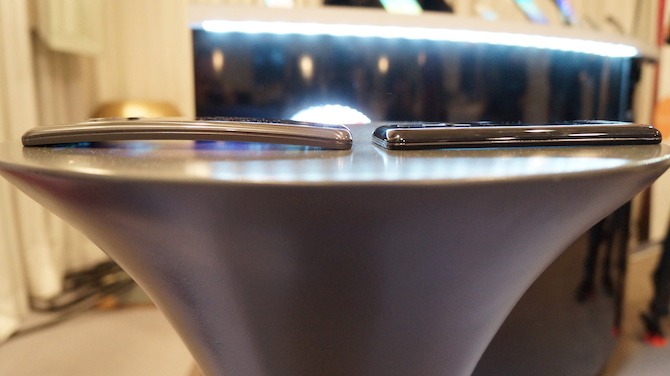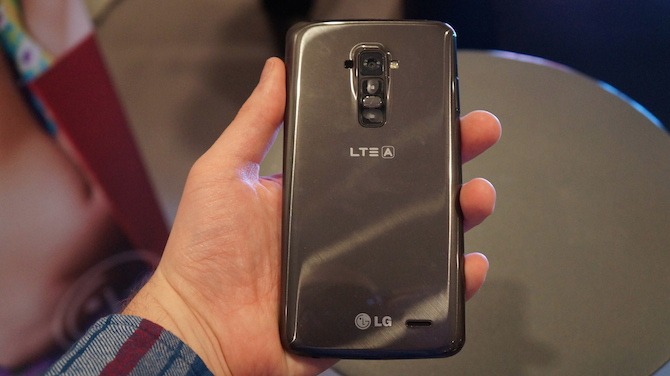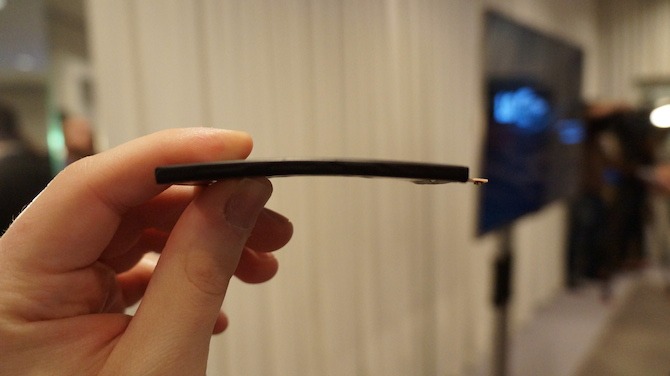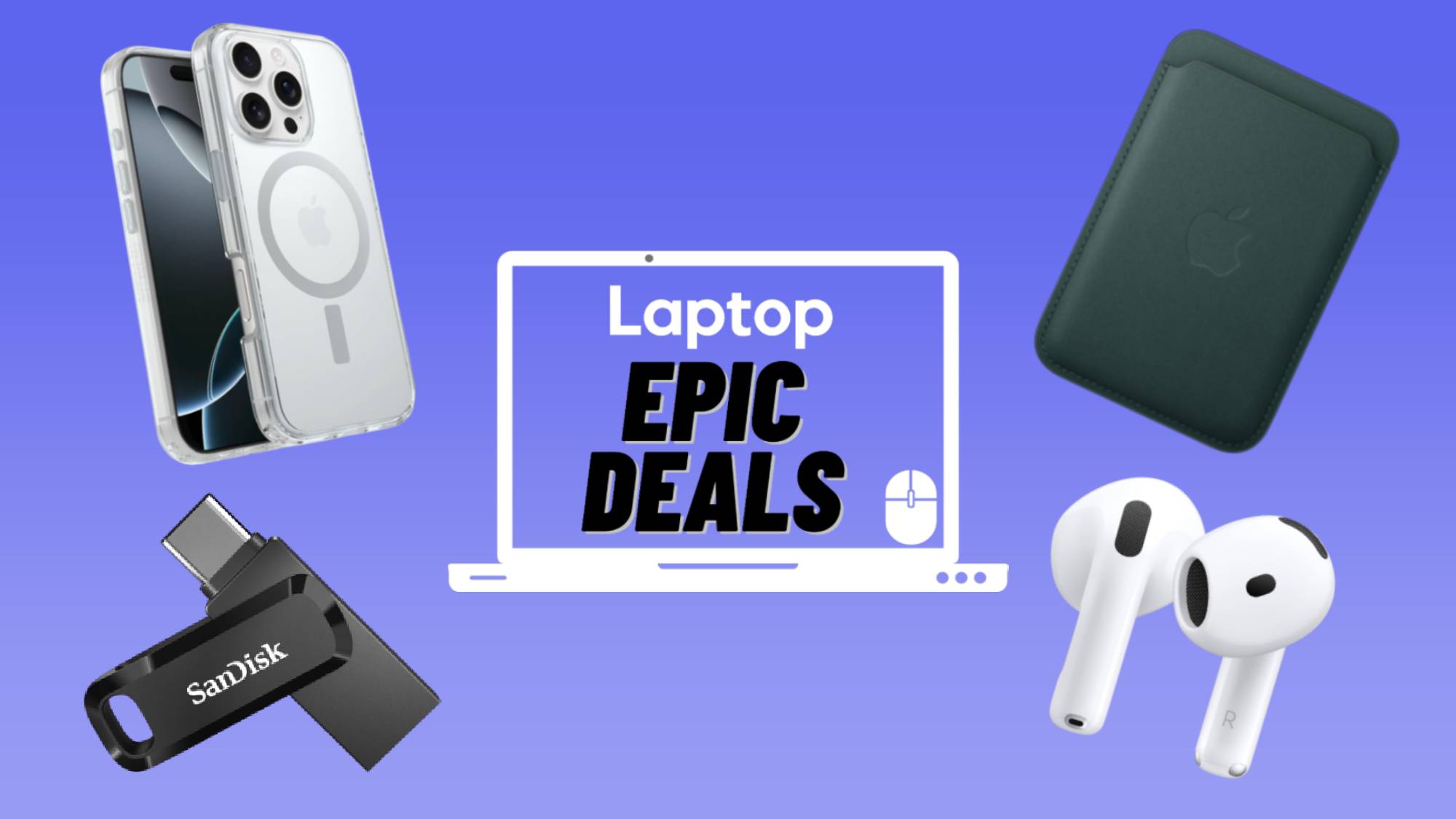LG G Flex Hands-On: First Self-Healing, Flexible Smartphone
The future will not be flat. That's what LG's Dr. Ramchan Woo declared as he unveiled the new LG G Flex during an exclusive press event in California. The 6-inch handset is one of the first to offer a curved body that contours to your face and the only one to feature a self-healing rear panel that can repair itself when scratched.
Though the press event took place in the U.S., LG hasn't announced pricing or carrier partners for the handset, although the company hopes to do so in the near future. We went hands-on with the Flex and came away impressed with its innovative design.
MORE: Top 10 Smartphones
The first thing you'll notice when you lay eyes on the G Flex is its uniquely curved chassis. Bent along its horizontal axis, the handset is designed to curve toward your face like an old-school landline phone. The curved design also has the added benefit of making typing a bit more inviting, as your fingers have a shorter distance to stretch than they would on a flat screen. LG also claims that watching movies on the curved display at a distance on 1 feet will offer a viewing experience on par with that of watching a video on a 55-inch TV at a distance of 10 feet.
The G Flex isn't the only curved smartphone on the market. Samsung's Galaxy Round is also curved, but it's along the vertical and not horizontal axis.
Flexible and Self-Healing

True to its name, the G Flex is indeed flexible. Though not completely foldable or bendable, the handset can be laid down with its screen face down and pushed until it's completely flat without causing any structural damage. LG says it tested this up to 100 times with as much as 88 pounds of pressure and the phone never cracked. We leaned on the G Flex during our hands-on and the phone bounced back each time.
It's not just the G Flex's flexibility that sets it apart, however. LG has created a special self-healing rear panel that can brush off most basic scratches. During a demonstration, LG's Dr. Woo scratched the G Flex with a wire brush and the rear panel was almost completely healed within 5 minutes. The key is a molecular substructure that rests on top of the panel's plastic coating.
Stay in the know with Laptop Mag
Get our in-depth reviews, helpful tips, great deals, and the biggest news stories delivered to your inbox.

When scratched, the substructure pushes back against the scratch, popping it back out. The process is dependent on room temperature, so the hotter it is, the faster the molecules can respond and heal the panel. Of course, deep scratches and cuts will cut right through the substructure, rendering it useless. LG says the solution isn't meant to be perfect, but should help keep the G Flex looking relatively fresh as it ages.
MORE: Game Changer Awards - The Most innovative Tech of 2013
Specs and Performance
Beyond its unique design, the G Flex is every bit the monster smartphone you'd expect a flagship to be. Up front, you get a massive 6-inch, 720p P-OLED display with LG's Real Stripe technology. The company says it chose to use a 720p panel rather than a 1080p panel, because the 720p worked better in the flexible form factor. With Real Stripe technology, LG says each of the display's pixels are the same size, which should offer truer colors.
During our hands-on, the display looked absolutely gorgeous. Colors were bright and overall contrast was wonderful. That said, we'll wait until we put the handset up against category leaders such as Samsung's Note 3, HTC's One Max and Nokia's Lumia 1520 before we pass our final judgements.
Inside, the G Flex gets Qualcomm's lighting fast 2.2-GHz quad-core Snapdragon 800 processor, 2GB of RAM and 32GB of onboard storage. There's no microSD card slot to be found. The G Flex's battery is rated at 3,500 mAh, which should provide plenty of usage before you have to reach for a charger. Like the display, LG made the battery curved, which allowed the company to cram more cells into a smaller space.

Overall, the G Flex was incredibly fast. Apps such as the camera opened in the blink of an eye, and swiping through the home screens was buttery smooth. We fully expect this device to stand up to the competition in our various benchmark tests.
Features
In addition to LG standards such as QSlide and Slide Aside, the G Flex brings with it two new features: Dual Window and Quick Theater. Dual Window allows users to run two apps concurrently on the same screen, similar to Samsung's Multi Window mode. Users can select from a predetermined number of apps, which include Gmail, Chrome, YouTube, Messaging and others and place them at the top or bottom of the screen.

You can then move content between the apps. During one example, Dr. Woo showed us how users can long press a photo from the Gallery app and drag it into the Messages app. URLs sent in text messages can similarly be opened in the Chrome or Browser apps.
Quick Theater is a gimmicky new feature that lets users slide their fingers from the center of the screen out to the edges, like a theater curtain, to get quick access to the Photo, Video and YouTube apps. It's a fun option, but it offers no functional benefit over opening the standard media apps.
MORE: Smartphone Buyers' Guide: 7 Things You Need to Know
Outlook
The G Flex is certainly a unique entrant in the smartphone space. A flexible handset that can withstand being bent is the first step toward truly bendable devices. The self-healing rear panel is equally impressive and shows that LG is thinking outside the box when it comes to its offerings, and we're excited to see where this technology will go in the future. But while the Flex is a truly impressive piece of technology, we'll withhold final judgement for our full review. Stay tuned.

